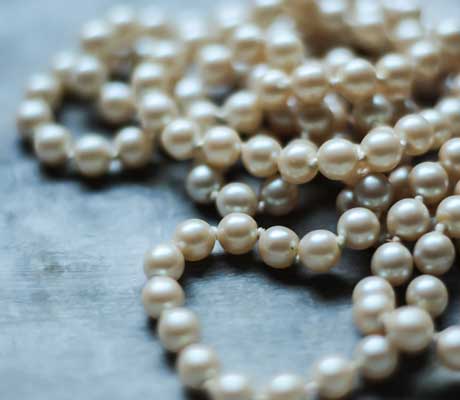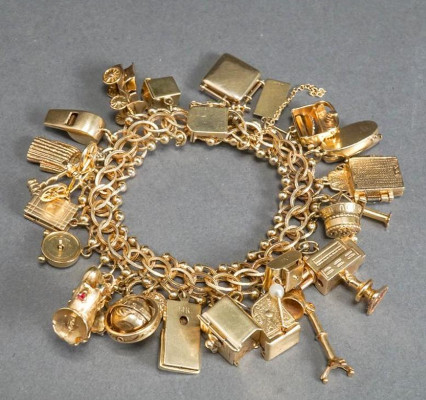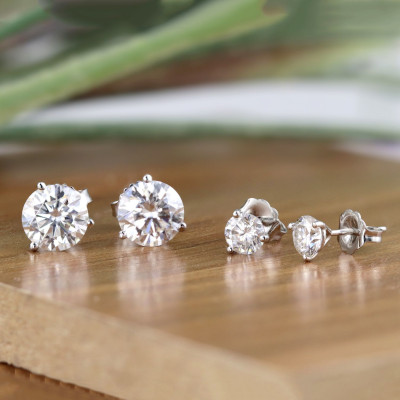Jewelry Essentials



Build a Basic Jewelry Collection
Like a basic clothing wardrobe you can build a basic collection of jewelry with a few pieces that can be worn for many years and on numerous occasions. The two most important considerations when choosing jewelry are quality and choosing pieces that compliment you. For instance, you should choose pieces according to your face shape, hair style, hair color, skin tone, and body proportion. Remember to buy the best that you can afford! A purchase of fine jewelry is a worthy investment.
Below is a sample basic jewelry collection:
1 watch
1 or 2 strands of pearls different lengths. Taller women can usually wear longer strands better.
Pearl stud earrings.
Diamond stud earrings. Buy real diamonds if you can afford them. Another option is quality cubic zirconia stud earrings. Smaller cubic zirconia studs appear more authentic than something huge.
A diamond pendant (optional)
A pair of gold hoop and/or silver hoop earrings
A pair of 14k gold and/or sterling silver button earrings (optional)
A gold chain 14k
A sterling silver necklace that works with your earrings
Only after the basics add pieces of quality costume jewelry as dictated by your outfit. These can be found in Museum gift stores or from artists. This way you have unique pieces instead of junk.
Selecting Jewelry
Gold
The value of gold is determined by its purity, measured in karats. The karat measurement divides purity into 24ths. For example, 24 karat gold is 100 percent pure and 12 karat gold is 50 percent pure. 24 karat gold is very soft and highly prone to scratching and damage. Wearable gold jewelry should be no more than 18 karat.
Gold is a precious metal that retains its value. The price of gold varies greatly, depending on weight, karat and where you make your purchase.
Gold jewelry is an investment. Be sure to buy gold from a reputable jeweler
Clean gold jewelry in warm water, dish washing soap, a lint-free cloth, and a toothbrush and store in a soft cloth to avoid scratches.
Diamonds
Carat Weight
Carat is actually a measurement of weight, not size. However, too many jewelers will advertise “approximate” weights such as “approximately” a 1/2 carat, which can actually be as low as 45 points. There is nothing wrong with buying a “light” 1/2 carat, however the cost is significantly less. You should know exactly what you are buying and pay accordingly.
Cut
The cut more than any other quality aspect, gives the diamond its brilliance. Often times, discount jewelers will advertise diamonds based on weight and color. But, often they have sacrificed some of the diamond’s beauty to achieve a stone that is a larger carat weight. A diamond gets its sparkle by cutting and polishing the diamond facets to allow the maximum amount of light that enters through its top to be reflected and dispersed back.
Color
The grading scale for color starts with the letter D, being the whitest, or best, and goes down the letter Z, being more yellowish. It is the whiteness in a diamond that allows the light to pass effortlessly through the stone and enhance the brilliance. A white diamond will look clean, crisp, and brilliant.
Clarity
Clarity refers to how many inclusions (or flaws) are in the diamond. Clarity has little to do with how the diamond looks under the microscope. Clarity is graded under 10x magnification by a gemologist. Minute flaws are invisible to the naked eye. However, the fewer inclusions, the rarer your diamond will be. If a diamond is rated SI-1 or above, it is flawless to the naked eye If there is even a tiny inclusion visible to the unaided eye, the stone is usually graded an SI-2 or I-1.
Diamond Buying Tips
Buying Diamonds 101
How to Buy a Gemstone?
Organizations that grade and value diamonds, gemstones and pearls:
1. Gemological Institute of America http://www.gia.edu/educational-programs/index.html
2. Gubelin Gemological Laboratory http://www.gubelingemlab.ch/
3. American Gem Trade Association http://www.agta.org/
4. International Gemological Institute http://www.igiworldwide.com/
5. American Gem Society http://www.americangemsociety.org/
Tip
The best time to buy fine jewelry is between March and early May. After the holiday season and before weddings.
You should be aware that often times jewelers will advertise jewelry at a discounted rate such as 50% off. This means that they might have marked up the value and falsely discounted the piece.
